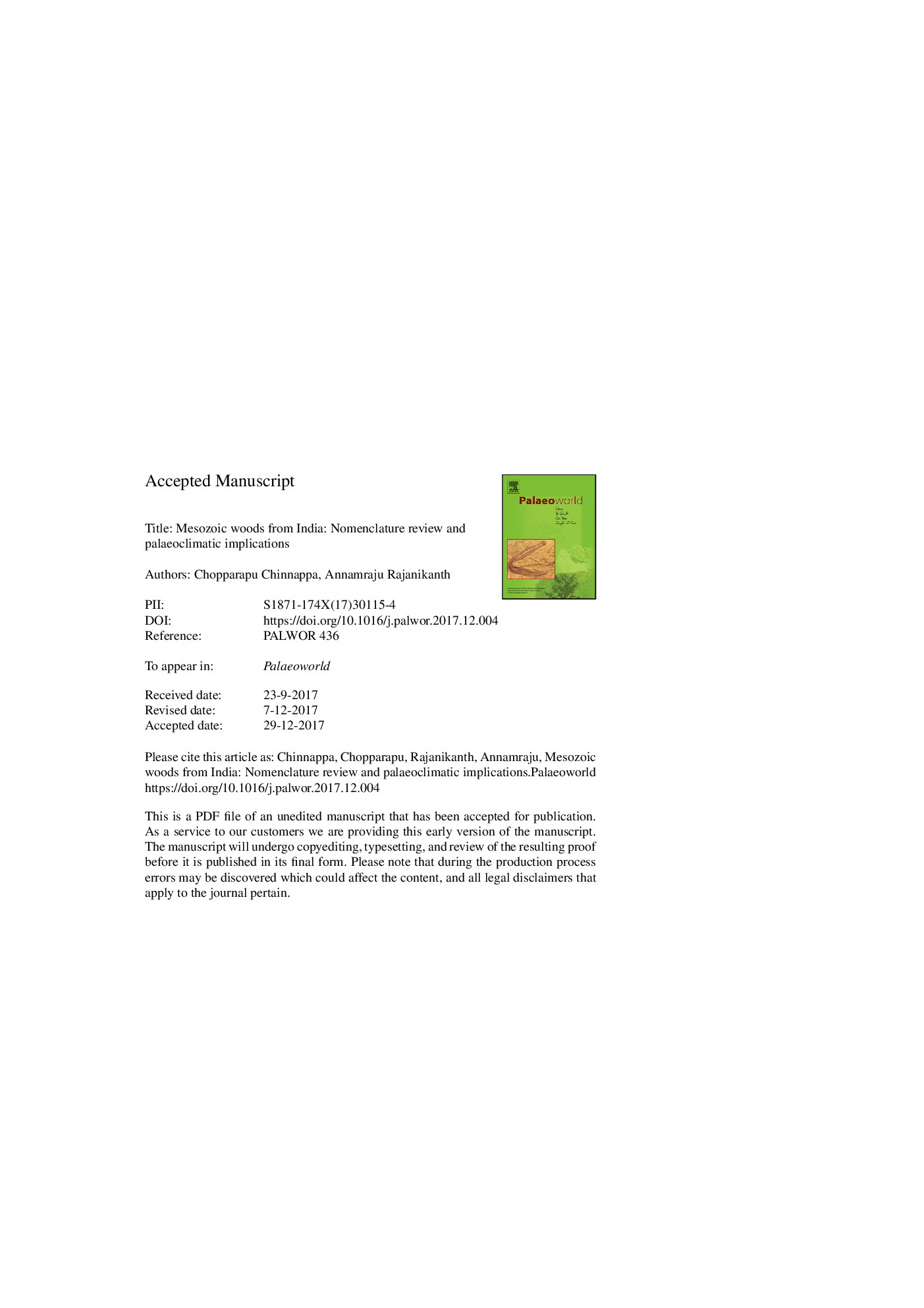| Article ID | Journal | Published Year | Pages | File Type |
|---|---|---|---|---|
| 8916545 | Palaeoworld | 2018 | 40 Pages |
Abstract
Nomenclature reappraisal, diversity pattern and palaeoclimatic implications of Jurassic, Triassic and Early Cretaceous pycnoxylic woods in India are undertaken in the present study. Among the fourteen generic names published previously, only eight are validly published and the rest are nomenclaturally illegitimate. About 51 species were reported under these genera to date. There is a gradual increase of species diversity of fossil wood from the Triassic to Early Cretaceous. The nature of the growth rings was applied to understand the palaeoclimate. The lack of distinct growth rings in the Triassic woods suggests absence of seasonality. The Jurassic woods with an inconsistency in growth rings and presence of growth interruptions suggest climate was seasonal and turbulent. During the Early Cretaceous, conifer dominated vegetation and with wider growth rings and gradual transition suggests warm environments with pronounced seasonality. The general increase in mean ring width from the Triassic to Early Cretaceous indicates ameliorating climatic conditions, particularly benign summer conditions.
Keywords
Related Topics
Physical Sciences and Engineering
Earth and Planetary Sciences
Palaeontology
Authors
Chinnappa Chopparapu, Annamraju Rajanikanth,
